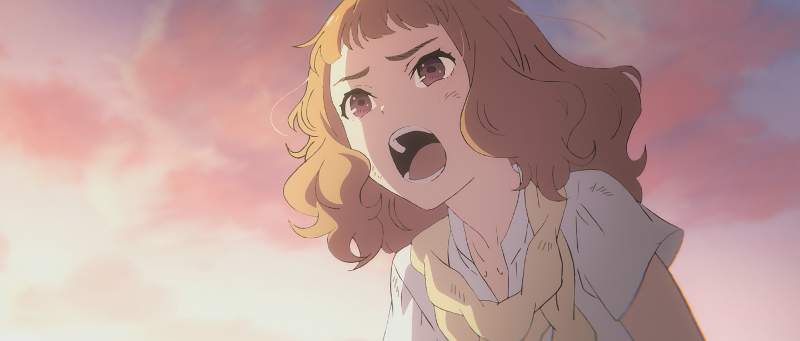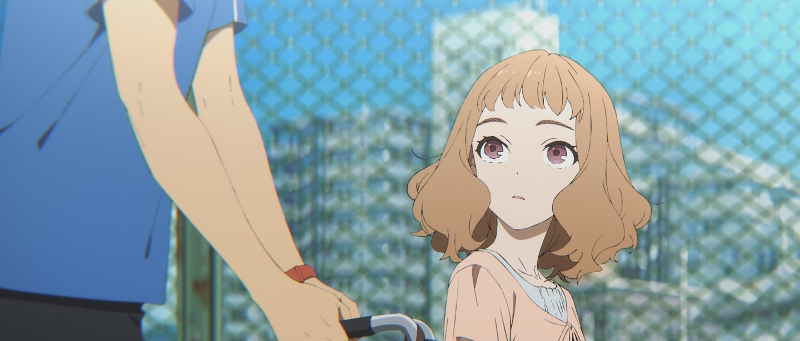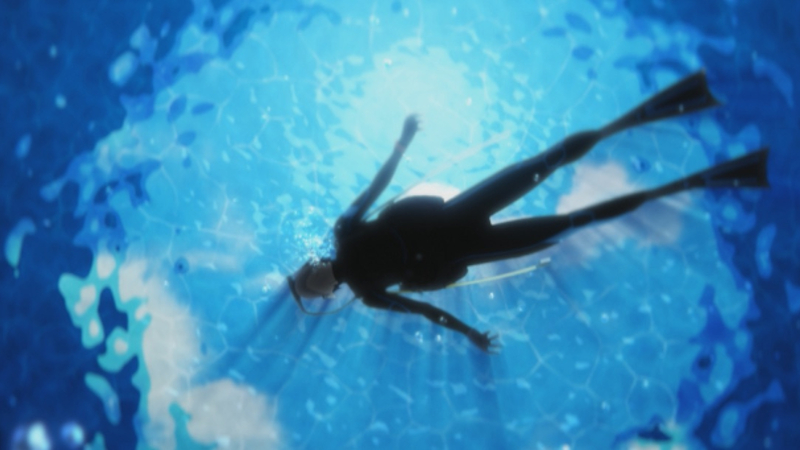Director – Kotaru Tamura – 2020 – Japan – Cert. PG – 99m
****1/2
A college student obsessed with fish and diving gets a job looking after a girl confined to a wheelchair – out in cinemas from Wednesday, August 11th
A disorienting opening for an anime. Bubbles. Underwater. Fish swimming. Frogmen. A male college student Tsuneo is working at a diving shop over the Summer. He dreams of going to Mexico, having plenty of time to dive and seeing the rare Clarion Angel fish.
Then, out walking late one night, the entire course of his life changes as a girl in an out-of-control wheelchair comes hurtling at him down a narrow street on a hill, flying out of the wheelchair and crashing into his arms in a frozen time special effect moment straight out of The Matrix (Larry and Andy Wachowski, 1999). Her horrified grandmother turns up seconds later asking the young man if he saved her.

The girl immediately accuses the boy of being a pervert who’s groping her, then that he’s following them (because his house is in the same direction they’re going). The grandmother invites him in for a meal with her grandaughter Kumiko who immediately objects to the name, preferring to be called Josee. And she seems to object to Tsuneo too for reasons that aren’t immediately apparent.
Shortly afterwards, Tsuneo gets a phone call from the girl’s grandmother asking him to looking after her during the day. It pays well so he goes for it. But he’s required to do whatever she asks, as long as it doesn’t involve taking her out of the house. She immediately sets him tasks of Sisyphean tedium such as kneeling in front of her door (to see how long he can’t stand it) and counting the separate strands of the tatami mat in the living room.

From there develops a relationship of sorts with Josee referring to Tsuneo as my servant, even when (spoiler alert!) her grandmother dies and she can no longer afford to pay him. The final reel ups the ante when he tries to save her from being hit by a car and ends up in hospital himself with the possibility of his never being able to walk again.
The great thing about this is that it does things you don’t imagine anyone would ever do in animation, Japanese or otherwise, such as holding the audience’s attention with a scene where a young woman in a library reads and shows a group of children a story she’s written and illustrated herself and holds their attention right to the end. Or a man undergoing physiotherapy in an attempt to regain the use of his legs.

It also throws in one or two beautifully rendered diving sequences like the opening one and contrasts these with Josee’s own drawings of underwater stories and her music-backed fantasy world in which she swims freely with fishes and other aquatic life, brought to an abrupt end when her grandmother suddenly turns off the music player.
In between all that, though, it’s a beautifully judged romantic piece in which neither the boy nor the girl is able to express their true feelings. In addition, it impressively presents wheelchair disability without judgement, simply exploring the lives of characters who, for the whole of or part of the narrative, just happen to be wheelchair users. In this regard, it would make a great double bill with that other Japanese film about a wheelchair user, 37 Seconds (Hikari, 2019). If you’re an incurable romantic, though, Josee, The Tiger And The Fish is the one to see.
Josee, The Tiger And The Fish is out in cinemas in the UK from Wednesday, August 11th.
Trailer:
